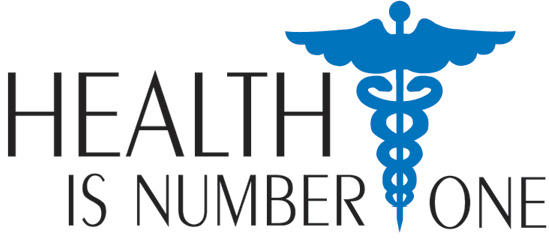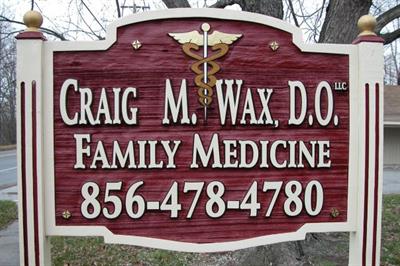Health Library ~ Family Medicine in Mullica Hill, NJWhat is Osteopathic Medicine? Copyright American Osteopathic Association OVERVIEW OF OSTEOPATHIC MEDICINE
In today's society, people are becoming more concerned about reducing their risk of developing diseases and are working to prevent long-term complications to their health. To accomplish this, many people are turning to their physicians for help. Osteopathic physicians, or D.O.s, are ideal choices in this regard. D.O.s offer a unique approach to modern medical treatment-particularly preventive medicine. According to Craig M. Wax, D.O., an osteopathic family physician who practices in Mullica Hill, New Jersey, "Osteopathic medicine is a hands-on, comprehensive and holistic type of medical care. It takes into account all facets of a person's state of health." Dr. Wax goes on to explain that osteopathic medicine's comprehensive medical approach includes not only prescriptions, medicines, surgery and other traditional measures but also osteopathic manipulative treatment (OMT). In this way, D.O.s help ensure optimal health for their patients. History of Osteopathic MedicineOsteopathic medicine was first described by a Missouri physician, Dr. Andrew Taylor Still, in 1874. This form of medicine evolved around the belief that the body has intrinsic healing abilities. Dr. Still and his unique medical view surfaced ata time when traditional medical practices were too often the problem and not the solution. Dr. Still had grown to distrust the quality of traditional medicines, many of which were as harmful as the disease from which patients suffered. As a result, he rejected the use of medical "cures" that were popular in his day, such as leeches and mercury. In 1892, Dr. Still founded the Kirksville College of Osteopathic Medicine in Kirksville, Missouri. By 1897, knowledge of osteopathic medicine spread, interest in pursuing this new branch of medicine had grown, and the school had more than 500 students. The American Association for the Advancementof Osteopathy was established in 1898 to help establish standards for the profession of osteopathic medicine, and for the osteopathic medical colleges. In 1901, the association changed its name to the American Osteopathic Association (AOA). The goals of the AOA are to protect the rights and privileges to practice osteopathic medicine, to develop a truly national profession, to preserve basic osteopathic principles, to ensure quality education and training programs, and to promote osteopathic healthcare systems. The Evolution of Osteopathic Medicine People interested in pursuing osteopathic medicine can choose from 19 osteopathic medical colleges throughout the United States. In 1999, the total medical student enrollment in osteopathic colleges exceeded 10,000. Currently, more than 44,000 osteopathic physicians practice medicine in the United States. Approximately 64 percent of these D.O.s practice in primary care areas (family medicine,general internal medicine and pediatrics), and a great many of them practice in rural and medically underserved areas. The osteopathic medical profession is increasing in stature and size as more and more people decide to become D.O.s and as patients increasingly seek out the unique skills of osteopathic physicians. "Students are attracted to the fact that osteopathic physicians belong to a 'hands-on' profession," states Dr. Wax. "D.O.s touch people, not only directly with their hands, but also with their care and concern for the whole person. The holistic approach to patient care makes D.O.s unique and distinctive." What is OMT? The foundation of OMT is built on a thorough knowledge of the musculoskeletal system, which makes up two-thirds of the body's mass. D.O.s believe that all of the body's systems work together, and that disturbances in one system often adversely impact function elsewhere in the body. "As an OMT specialist, I have a unique and effective skill that would enable me to treat a patient even if we were stranded on a desert island," says Joel Cooperman, D.O., an osteopathic physician who specializes in osteopathic manipulative medicine in Colorado. "The NEJM study is a wake-up call to every physician regarding the efficacy and cost-effectiveness of OMT," notes Crosby. "As the positive results of OMT continue to be born out by scientific studies, OMT will receive more and more national exposure. As this happens, OMT-a unique skill that only D.O.s can provide-will be sought out more and more by patients." Future of Osteopathic Medicine * Promotes awareness of osteopathic medicine * Accentuates the distinctiveness of osteopathic physicians * Helps unify the "family" of osteopathic medicine Currently in its third year, the Campaign has received positive feedback from D.O.s. Currently the osteopathic medical profession is enjoying a higher-than-usual influx of women and minorities making it more representative of the population of the United States. In addition, the AOA recently launched its Women's Health Initiative and its Minority Health Initiative, both of which help to spread awareness of the special health needs of patients who are too often ignored by national healthcare decision-makers. "The increase in the number of women and minority D.O.s is helping to add to our diversity and is enabling the osteopathic profession to better serve the melting pot of America," says Crosby. "Osteopathic medicine has a bright future," asserts Dr. Cooperman. "The Unity Campaign, the AOA initiatives, various studies on the effectiveness of OMT are letting the public know that D.O.s are doctors who can provide the public with the services and the care they need." As physicians who emphasize prevention and wellness, D.O.s strongly support the U.S. Surgeon General's Healthy People 2010 initiative as both strive to increase the quality and years of a healthy life. The American Osteopathic Association (AOA) reminds you that November 12-18 is National Osteopathic Medicine Week. This year's target group is young women from the ages of 12-24. During this time, osteopathic physicians (D.O.s) will work to raise awareness within this group about the many issues they face as they strive to maintain good health throughout their lives. D.O.s are fully licensed physicians who have additional training that focuses on the body's structure and function as well as its ability to heal itself. For more information on osteopathic medicine, or to locate a D.O. in your area, call the AOA at 1.800.621.1773, ext. 8252 or visit the AOA web site at www.aoa-net.org. Did You Know...?
Source: American Osteopathic Association For more information, contact: American Osteopathic Association
|
|





